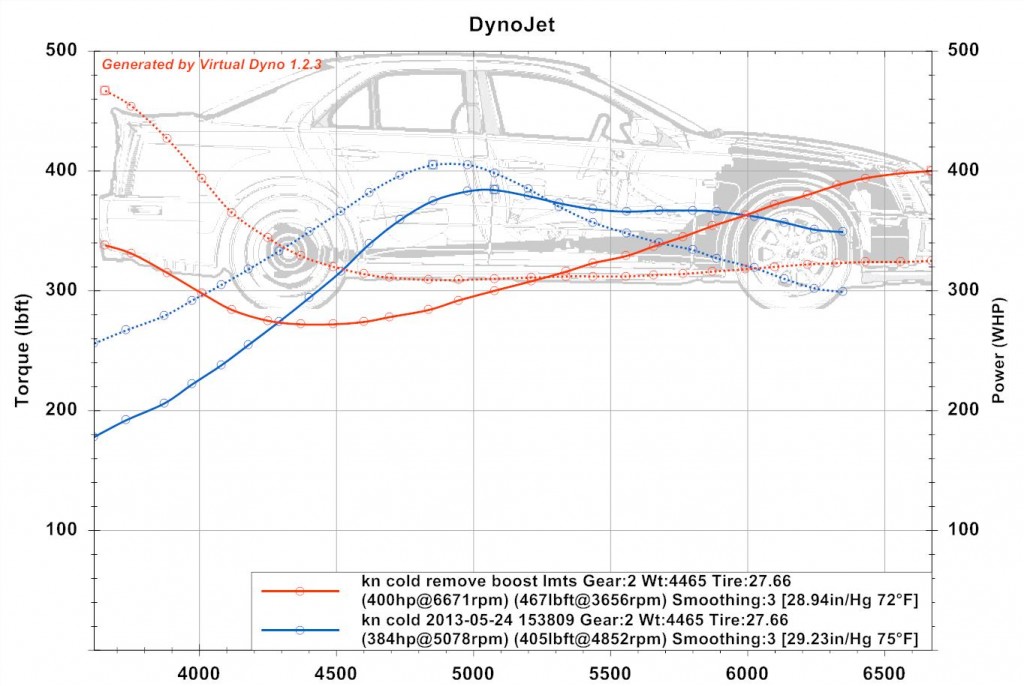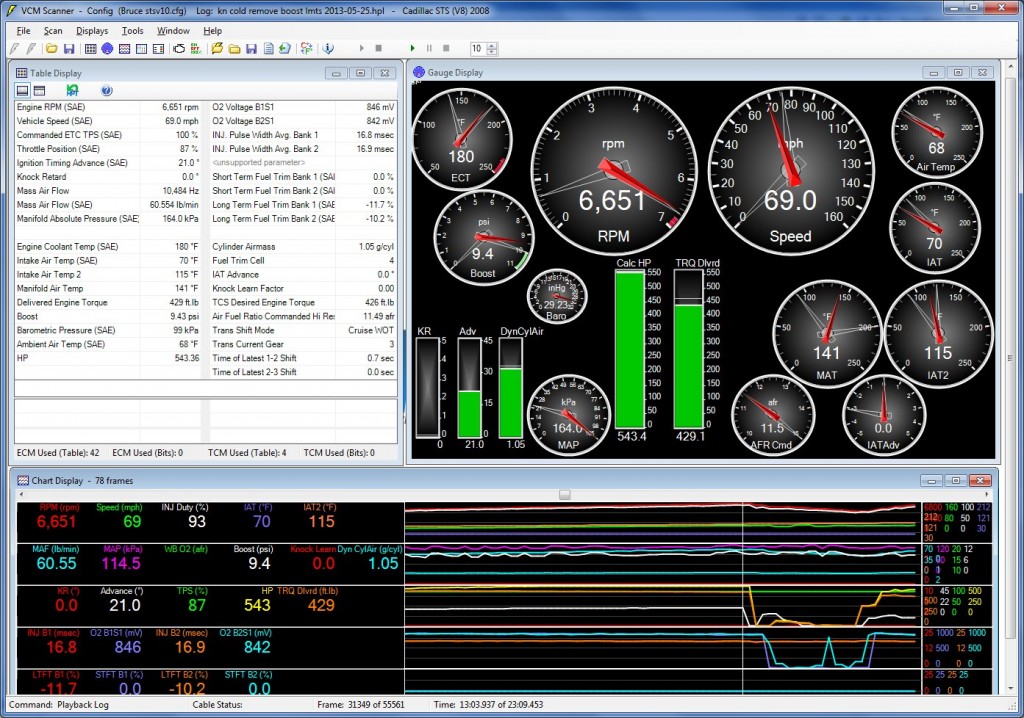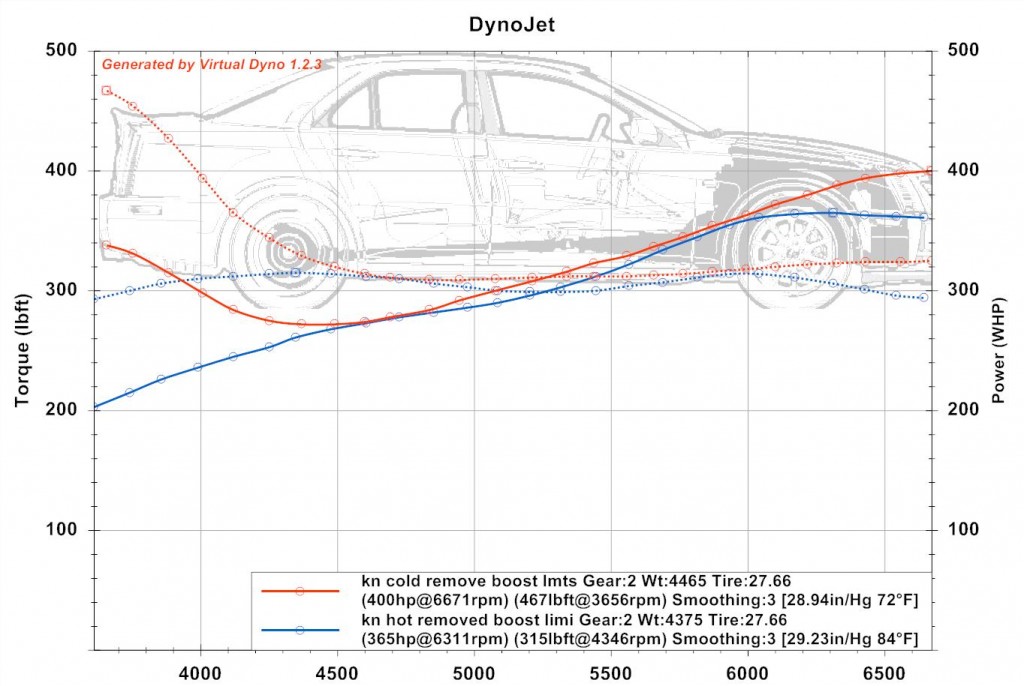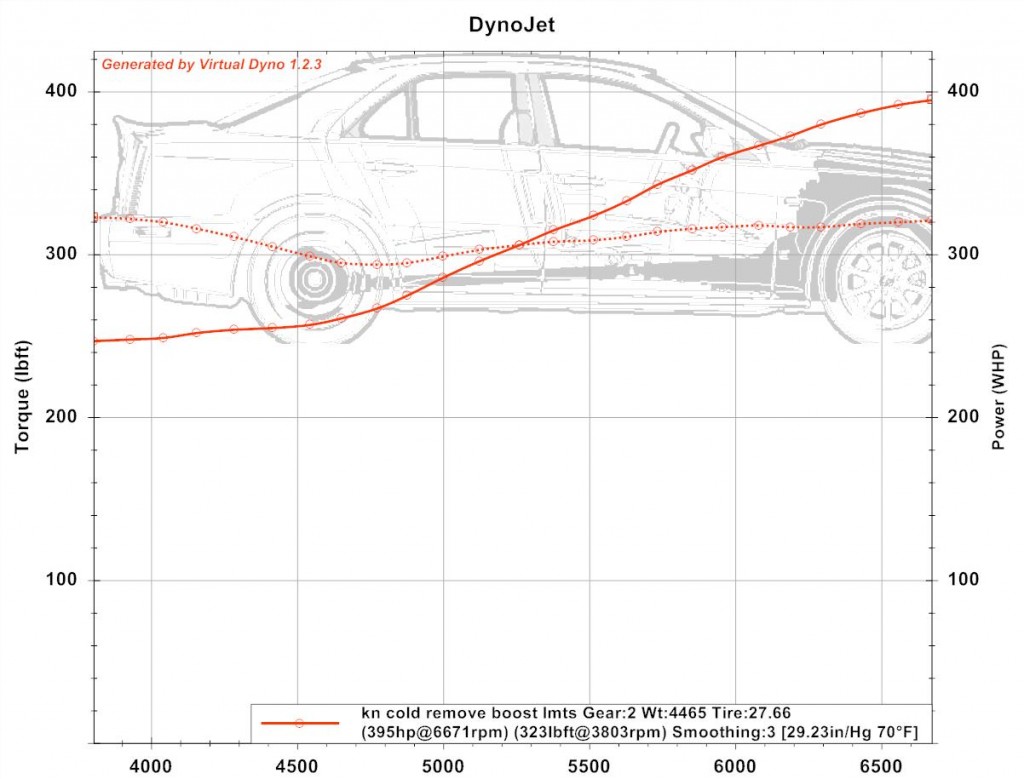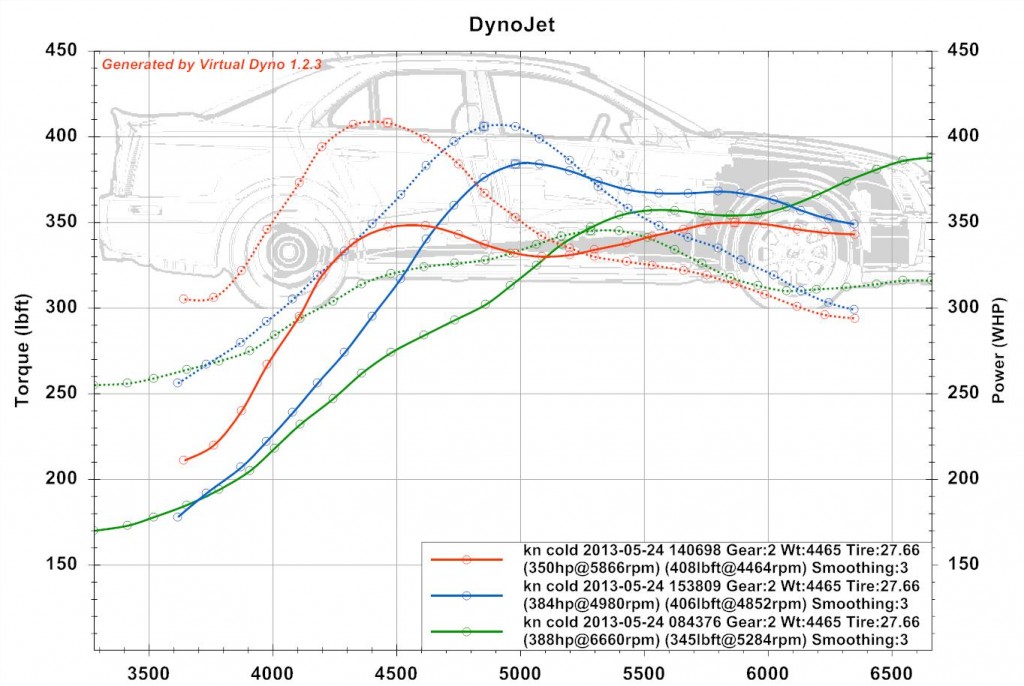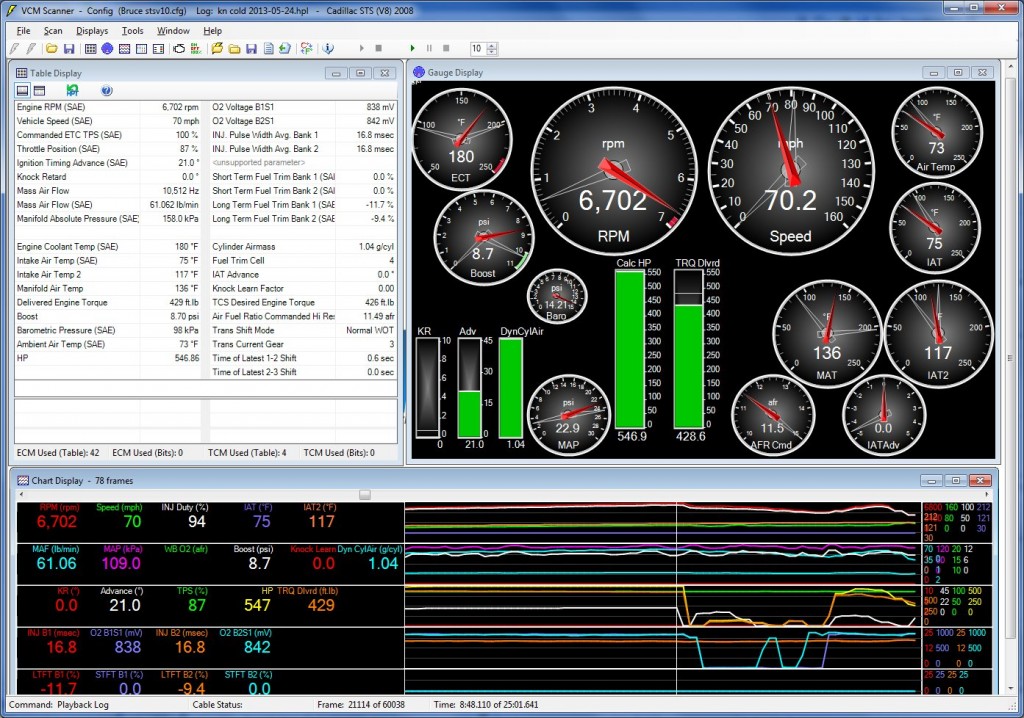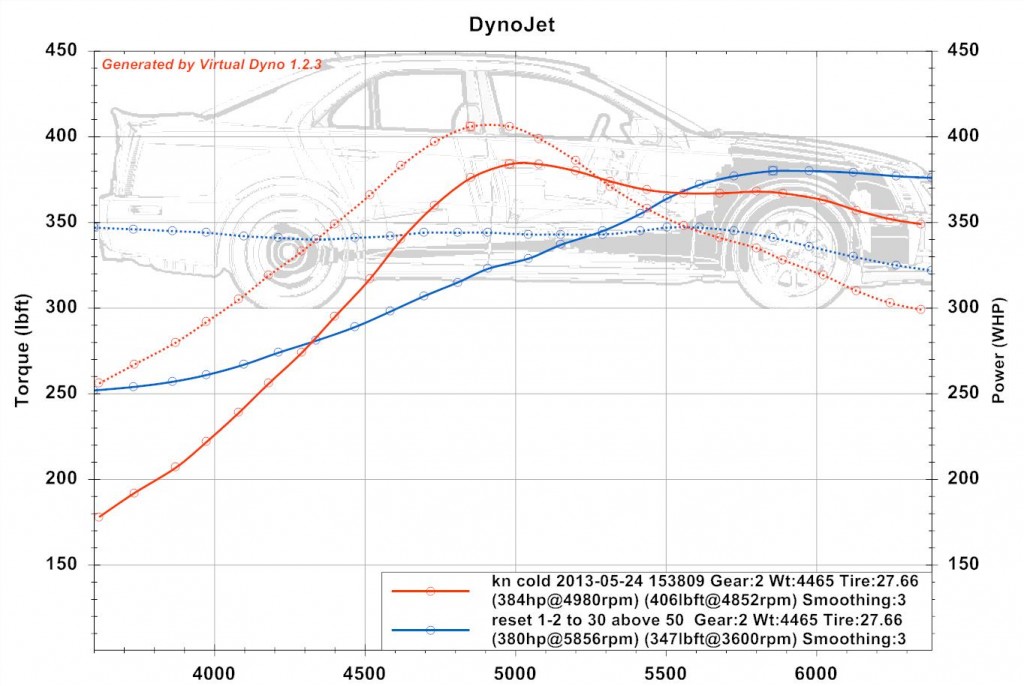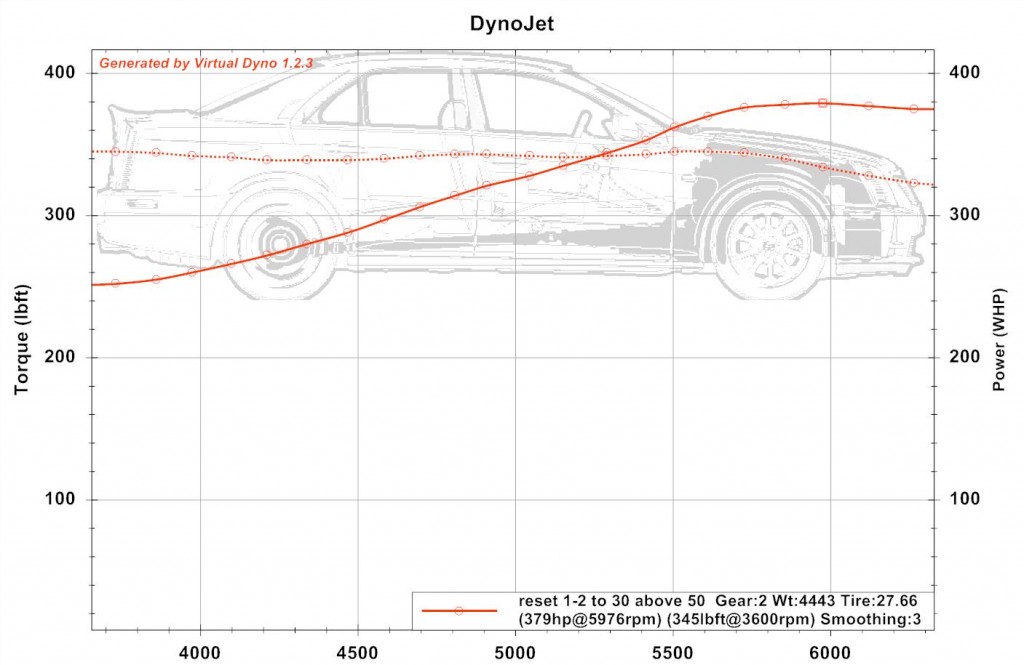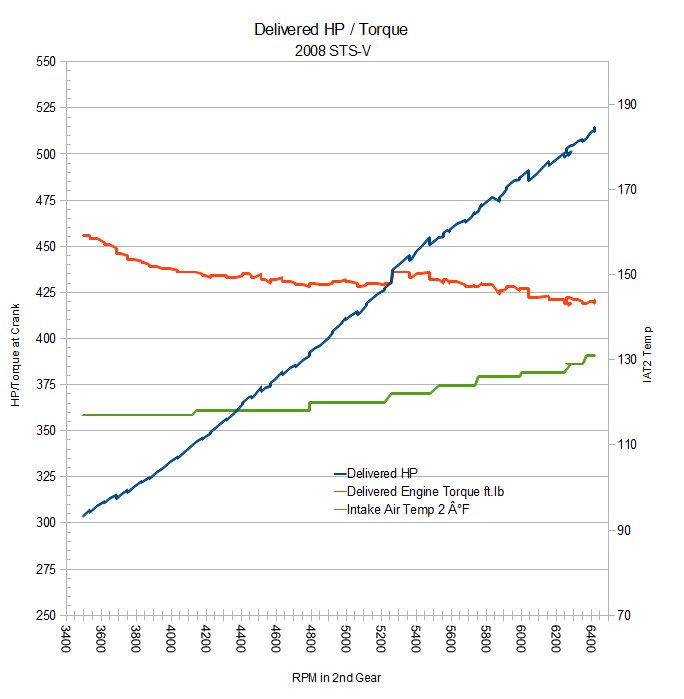I am gathering more test information using HPTuners and Virtual Dyno on my 2008 Cadillac STS-V across different modifications. Today’s runs with a full tank of gas and nice weather after an overnight rain. HPTuners shows the baro that the engine perceives, so I am using that for baro adjustments.
This morning’s run in red vs the previous odd run in blue. Today’s run showed the expected shapes — high torque at low RPM, high HP at high RPM. Huge torque reading at low RPM today. Not sure what additional variables the automatic transmission might be tossing in — these runs are in TUTD (touch up, touch down) mode with 2nd gear manually selected. I have also adjusted yesterday’s run to reflect that it was with lower fuel before I filled up today.
The Virtual Dyno is estimating wheel horsepower. 400 WHP with 20% drivetrain losses for an average automatic would equate to 500 hp at the crank. HP Tuners estimated the engine was making 543+ hp at the crank for an instant at 6651 RPM, and above 520 from 6300 RPM on; 1- 400/520 hp which would be a 23% drivetrain loss. My goal for the STS-V was to get to a solid 400 WHP, which was reached with exhaust and CAI. Now I would like to get to a solid 425 WHP…
After the huge mid-RPM torque and low high HP run in the comparison above, I made an adjustment to ensure the engine wasn’t limiting boost. In this theory, if the supercharger were breathing better and hit a higher boost point earlier than expected, the PCM might pull boost at high RPM.
Today’s run showed the engine is pulling and building boost all the way to fuel cutoff. So either the previous odd run was just that, an odd dataset, or the new adjustments are working.
Here is a comparison of last night’s hot run vs today’s cold run:
Both of these are adjusted for weight, barometer, and temperature per the SAE standard, so they should read identically (within the error of the method used). However, my STS-V is effected by heat to a greater degree than the standard adjustments correct so even with adjustments hot reflects lower results than cold. This has added a dimension to testing.
Update:
Today’s graph had some data noise at the beginning of the run that caused the high torque spike. With that removed the updated graph below is correct for today:

